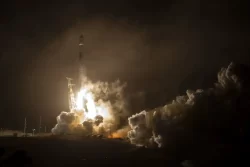- They added that dinosaurs “never took a physics class and failed to fund planetary defense.”
According to SciTechDaily, the researchers also concluded that the most effective method of pulverizing is by using a small nuclear explosive. NASA’s Space Launch System or SpaceX’s Starship is technologically sufficient enough to mitigate the existential threat and change the object’s velocity.
Advancements in monitoring also create a sense of safety.
- “Two decades ago, only a handful of the potential species-ending kilometer-sized asteroids had been cataloged and their orbits through the solar system carefully measured,” said Brad Gibson, director of the E A Milne Centre for Astrophysics at the University of Hull in the U.K., per The National News.
- “As of today, essentially 100 percent of these extreme asteroids (roughly 1,000 of them) are now covered, and we are in no danger from any of these, at least for several centuries,” he said.
- But there are undiscovered objects still out there, best observed from the Southern hemisphere.
- “There are too many blind spots. We need dedicated space-based observatories which can provide us with a 360-degree view of objects potentially targeting the earth,” said Dimitra Atri, a research scientist at the NYU Abu Dhabi Centre for Space Science.
